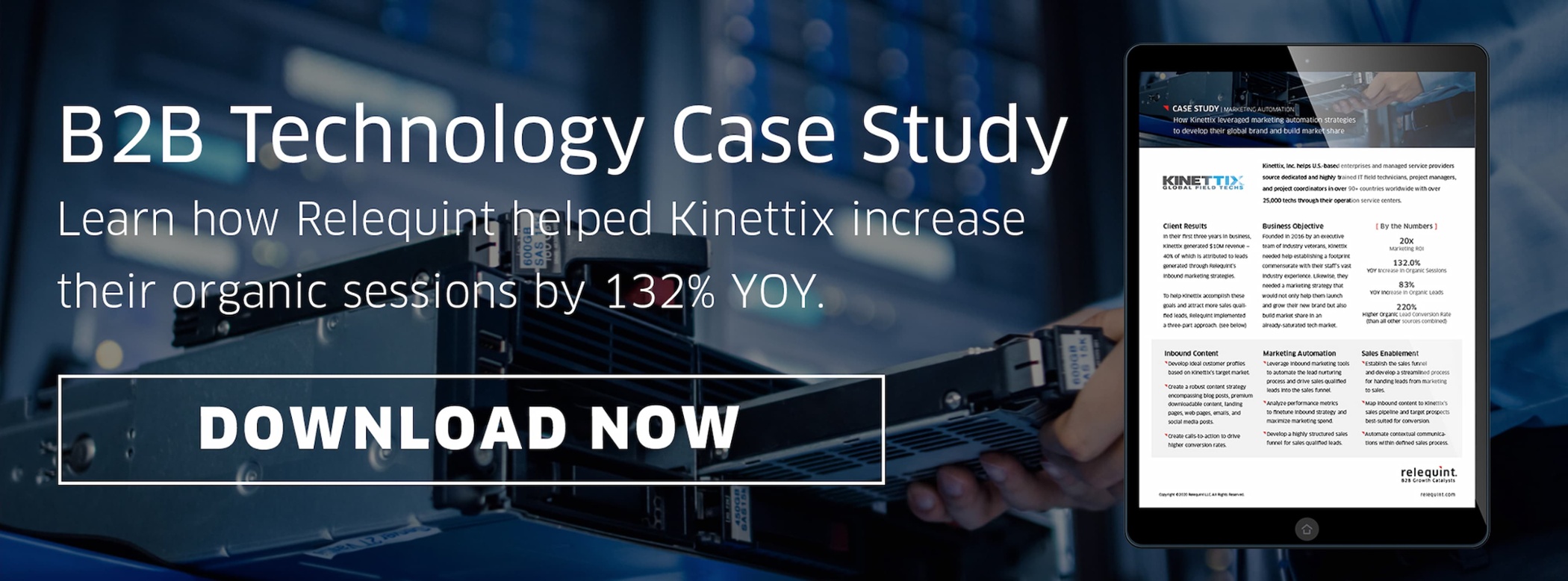To deliver the most sales qualified leads to your B2B technology sales team, you must deliver the right message to the right person at the right time. Only then can you meet your customer where they are in the buyer's journey and guide them toward the practical business solutions your company offers.
Most B2B marketing teams believe their messaging and timing are strong. Finding the "right place," though, provides the greatest challenge.
Should you be on social media and, if so, which sites? Should you focus more on conferences or email? You want to use your time, energy, and budget wisely to get a handle on your KPIs and meet business goals.
Of course, there’s always paid advertising and sponsored posts. However, if that’s not in the budget, there are plenty of other cost-effective marketing channels.
Email to Increase Your Marketing ROI
Permission-based email marketing still has the highest marketing ROI. In 2020, that ROI was about 38:1 or $38 for every $1 spent. However, building a permission-based email list of engaged subscribers takes time and often requires the incorporation of other marketing channels such as social media and gated content. So, email will never be your only channel.
With email, focus on providing insights and valuable tips rather than directly showcasing your product or service. If you do want to highlight your offerings, then develop strategies to increase email conversion rate.
Try using behavioral segmentation and email automation to engage your existing contact database and help prospects move through your sales funnel. For example, if you’re sending an email blast to promote your newest B2B technology whitepaper, then segment your recipient list based on who’s already downloaded a guide or case study from your site and who hasn’t. Those who’ve already accessed your content likely already see you as a thought leader on certain topics, whereas those who haven’t may need convincing. Tailoring your content based on consumer behavior helps you create a more personalized experience.
Also, don’t underestimate the value of demographics, particularly location and job title. Both of these factors play a role in B2B tech purchasing decisions.
LinkedIn As Your Primary Marketing Channel
With 756 million users, LinkedIn is an active community of thought leaders and decision-makers. Professionals from all areas — entry-level to C-suite — use LinkedIn to network and read articles, usually revolving around their specific industry, management, business technology, or business in general.
With all this in mind, it’s no wonder 80% of B2B social media leads currently come from LinkedIn.
Prioritize LinkedIn by sharing valuable B2B technology content between twice a day and 3 times a week, testing frequency to find your sweet spot. This can differ from brand to brand, but Sprout reports that Tuesday through to Thursday between 9am and 12pm are generally best.
As far as what to post, promote any inbound content you have including blogs, guides, and case studies. Also, post your offering pages when relevant.
Consider not only redirecting users to your website but also sharing content natively on LinkedIn. Start by identifying the thought leaders in your organization and determine which topics may be most relevant to their audience. Then, produce articles around these topics that you can promote on their individual pages. This strategy can help you connect with users in your subject matter experts’ networks who may not follow your main corporate account.
Twitter for Thought Leadership Lead Generation
Besides LinkedIn, B2B marketing leaders say Twitter is the next best place to get eyes on your content and grow an audience that regularly engages with it. Like LinkedIn, Twitter is also another great place to establish people within your organization (usually the CEO or other C-suite executives) as thought leaders.
Though you can’t share articles directly on Twitter, use the platform to direct followers to content on your other channels. Remember to post at times when most people are active — which Sprout says is Wednesdays between 9 am and 3 pm or Tuesdays and Thursdays between 9am and 11 am.
Also, use Twitter's remarketing tools to re-engage people who've shown interest in your product, website, or social presence. Twitter is a different animal because people there are highly engaged, so posting 5 times to 20 times a day isn't out of the question. Responsible use of social media automation is essential to building an active audience to generate leads.
YouTube to Educate B2B Technology Leads
There is, of course, some overlap between Twitter and YouTube. So, if resources are limited, Twitter is probably a better choice.
But, here's where this B2B marketing channel is better than Twitter or LinkedIn: it allows you to organize educational resources according to topics, which is critical during the consideration phase when lead generation happens.
Search engines optimize YouTube to expand your visibility in both Google search and YouTube.
Use strong calls to action to generate leads from this channel. Otherwise, you risk people watching your video and leaving. Likewise, break topics into digestible sections, so you can keep videos shorter (3-5 minutes) and maximize exposure by cross-promoting videos through email, LinkedIn, Twitter, and your website.
If you’re at a loss for YouTube content, don’t be afraid to refresh what you already have. For example, look at your top-performing blog. Would that topic lend itself well to an explainer video? If so, make a video about it. You could even go more in-depth in the video than you did in the article.
If your B2B technology company has a podcast, consider recording both video and audio to get two pieces of content in one. That way, you’re accommodating prospects who prefer content in different formats.
SEO for More Consistent Lead Generation
Search Engine Optimization gives you visibility in Google search — perhaps the most important marketing channel of all. But because it takes time and smart SEO strategy implementation to achieve optimal visibility, we don't suggest it as your only channel.
With that said, striving to dominate organic search is a worthy goal. It puts you on your target customers' shortlist and gives you instant credibility. If Google trusts you, that means your customers generally trust you and like your product. This offers companies a more steady and reliable stream of high quality leads.
SEO involves web design and optimization of what people see on page and what's happening behind the scenes on a website. Research and create content that people are looking for in search to rise in the ranks. Combine SEO with content marketing and/or inbound marketing strategies to maximize lead generation.
See how one B2B technology company is using all these marketing channels to increase organic lead conversion rate by 220%. Download our case study now.![]()







 By
By 
